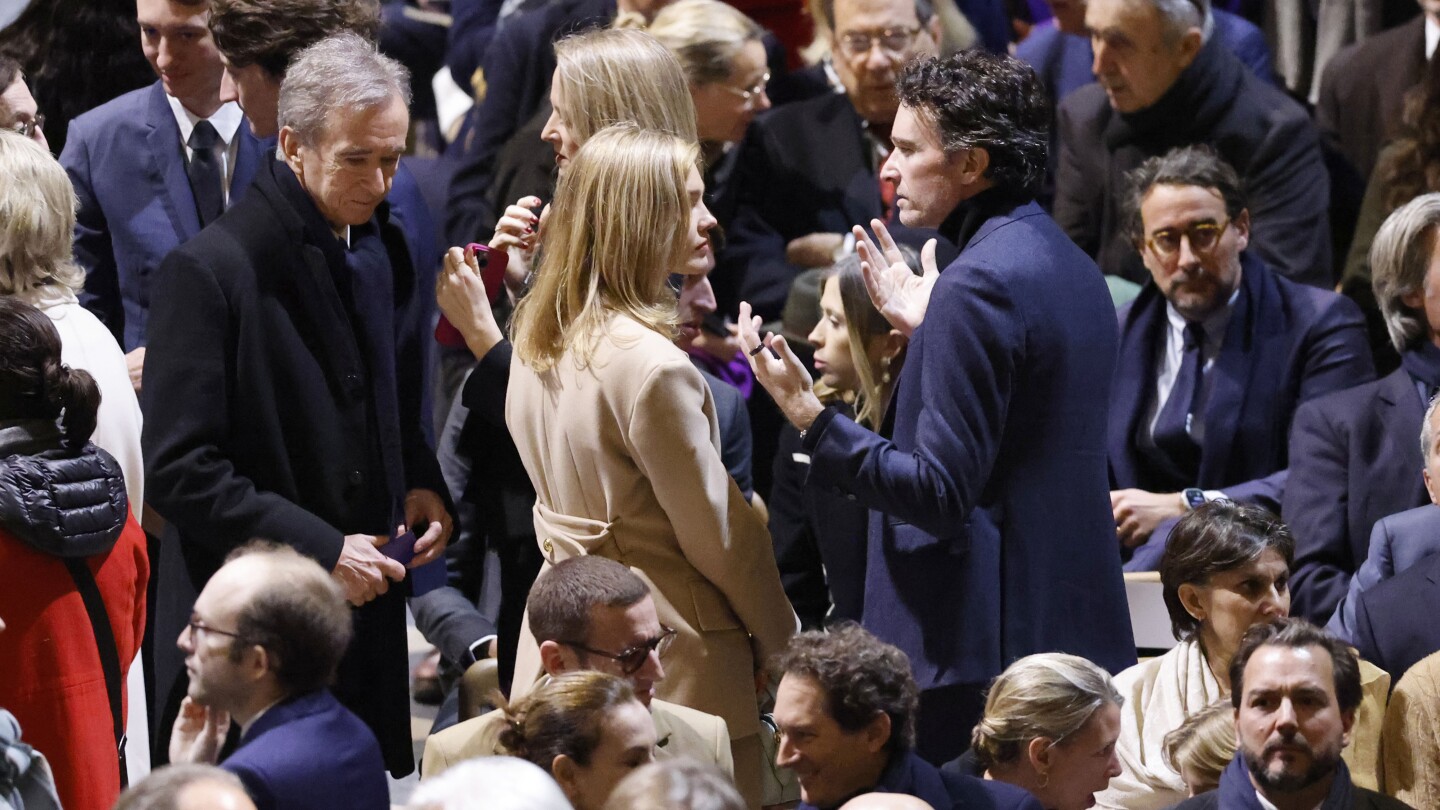The Grand Reopening of Notre Dame: A Cultural Renaissance Fueled by LVMH
In a remarkable convergence of heritage and luxury, the grand reopening of Notre Dame Cathedral has emerged as a defining moment for both cultural preservation and the luxury sector. Orchestrated by the French luxury conglomerate LVMH, the event not only celebrates the reopening of this iconic monument after its devastating fire in 2019 but also serves as a platform to showcase the brand’s significant influence in the luxury market. This article explores the implications of LVMH’s involvement in the restoration of Notre Dame, the broader impact on the luxury industry, and the cultural significance of the event.
A Symbol of Resilience
Notre Dame Cathedral, a UNESCO World Heritage site, has stood as a symbol of French history and culture for over 800 years. The 2019 fire that ravaged parts of the cathedral was a tragic event that captured the world’s attention, prompting an outpouring of support and donations from individuals, corporations, and governments alike. LVMH, under the leadership of its CEO Bernard Arnault, pledged substantial financial support for the restoration efforts, contributing €200 million to the cause.
The reopening ceremony, attended by dignitaries, artists, and influencers, was not merely a celebration of restoration but also a reaffirmation of the cathedral’s place in contemporary culture. With over 13 million visitors annually prior to the fire, Notre Dame is not only an architectural marvel but also a vital tourist attraction that contributes significantly to the local economy.
LVMH: A Cultural Commitment
LVMH’s involvement in the Notre Dame restoration reflects the company’s broader commitment to supporting culture and heritage. The conglomerate has a history of investing in cultural initiatives, including art exhibitions, museum partnerships, and the promotion of French craftsmanship. This strategic direction aligns with LVMH’s brand identity, which emphasizes luxury as a fusion of tradition and innovation.
By aligning itself with the restoration of Notre Dame, LVMH not only enhances its cultural capital but also positions itself as a steward of heritage. The company’s efforts to integrate luxury with cultural preservation are evident in several key areas:
- Financial Investment: LVMH’s significant financial contributions demonstrate its commitment to restoring not just a building, but a cultural landmark.
- Brand Association: Associating with Notre Dame enhances LVMH’s image as a leader in advocating for culture and heritage, further solidifying its position in the luxury market.
- Community Engagement: LVMH’s involvement goes beyond financial support; it engages with local artisans and craftspeople, thereby contributing to the preservation of traditional skills.
The Luxury Sector’s Resurgence
The reopening of Notre Dame comes at a time when the luxury sector is experiencing a remarkable resurgence following the challenges posed by the COVID-19 pandemic. As consumer behavior shifts and the desire for unique experiences grows, luxury brands are innovating in ways that blend experience with heritage. LVMH’s strategic foresight in this regard has allowed it to thrive in a rapidly changing market.
Several trends are shaping the luxury landscape, which are relevant to LVMH’s engagement with Notre Dame:
- Experiential Luxury: Consumers are increasingly seeking experiences that provide emotional connections and storytelling. The reopening of Notre Dame offers a rich narrative that enhances the luxury experience.
- Sustainability and Heritage: Today’s luxury consumers are more conscious of sustainability. LVMH’s restoration efforts align with these values, showcasing a commitment to preserving cultural heritage.
- Digital Engagement: With the integration of digital technology, luxury brands can engage consumers in unprecedented ways, from virtual tours of Notre Dame to exclusive online events.
Broader Implications for Cultural Institutions
The involvement of a luxury brand such as LVMH in the restoration of a cultural institution raises critical questions about the future of cultural heritage in the age of capitalism. While the financial support is undoubtedly beneficial, it prompts a discussion about the potential commodification of culture.
As luxury brands increasingly engage with cultural institutions, there is a need to consider the following:
- Authenticity vs. Commercialism: How can cultural institutions maintain their integrity while collaborating with corporate entities?
- Accessibility: Will the influence of luxury brands make cultural sites more exclusive, or can it enhance public access and appreciation?
- Long-term Impact: What are the long-term implications of corporate involvement in cultural heritage preservation, and how can stakeholders ensure sustainable practices?
Conclusion: A New Era for Luxury and Culture
The reopening of Notre Dame Cathedral, facilitated by LVMH, marks a pivotal moment in the intersection of luxury and culture. It underscores the potential for collaboration between corporate entities and cultural institutions to achieve common goals of preservation and celebration of heritage.
As LVMH continues to navigate the complexities of the luxury market, its commitment to cultural preservation will likely serve as a model for other brands seeking to engage meaningfully with heritage. The event is not just a celebration of a restored monument; it symbolizes a renewed commitment to cultural investment, a reflection of contemporary consumer values, and an opportunity for luxury brands to redefine their role in society.
Ultimately, the success of such initiatives will depend on maintaining a balance between commercial interests and the authentic preservation of cultural identity, ensuring that iconic landmarks like Notre Dame continue to inspire and resonate for generations to come.
See more Business Focus Insider Team

